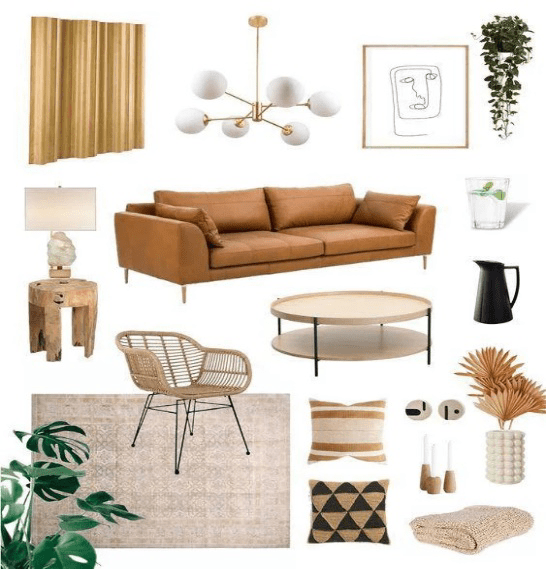A mood board is a visual representation of ideas for a design project. At its most basic, a mood board is a collage of images.

This collage is a designer’s go-to tool for a project’s initial planning phase. It represents ideas taken from the initial discussions between a client and designer. Its goal is to establish clear direction on a project before actually beginning design work.
The purpose of a mood board is to help explore ideas and figure out the general style, mood, colors, and overall feel of a room or project space.
Methods of creating a mood board.
Creating mood board for interior design.
1. Gather Images
To start, collect images that represent the styling you’re considering. These can be other rooms that have the look you’re going for, or actual furniture, textiles, and fixtures you might want to purchase.

2. Trim Away Any Background
Unless you’re creating your entire mood board on Pinterest, you’ll want to download your favorite images to your computer or device. At this point, it can be good to trim away any extra background (even white background), particularly on images of products. This is especially important if you’re creating a mockup-style mood board.

3. Start With the Non-Negotiables
Before you start playing with possibilities, you’ll want to add images of any existing items or other non-negotiables in the room you’re decorating.
If you’re creating a collage-style mood board, this could mean bringing in swatches of your existing flooring or wall color, pictures of furniture you plan on keeping, or anything else about the space that won’t change.
4. Experiment With Different Options:
Start by bringing in your favorite option for each element in your space—one couch, one rug, and so on.
Even if you’re not creating an actual mockup, make sure you arrange pieces that will be next to each other in your room near each other on the mood board. You want to make sure the colors and patterns work well together.
5. Limitless Approach
When it comes to the creative process of designing beautiful mood boards, don’t limit yourself.
You can add as many elements to your mood board as you want, but it should not be too cluttered and should add meaning to the design.

6. Material Design:
If you plan to showcase different materials used in the furnishing and how that will impact the overall design, you can use little crops of textures and patterns.
These material crops designed through a mood board maker or paired with an actual image will help your client understand the final output better.








